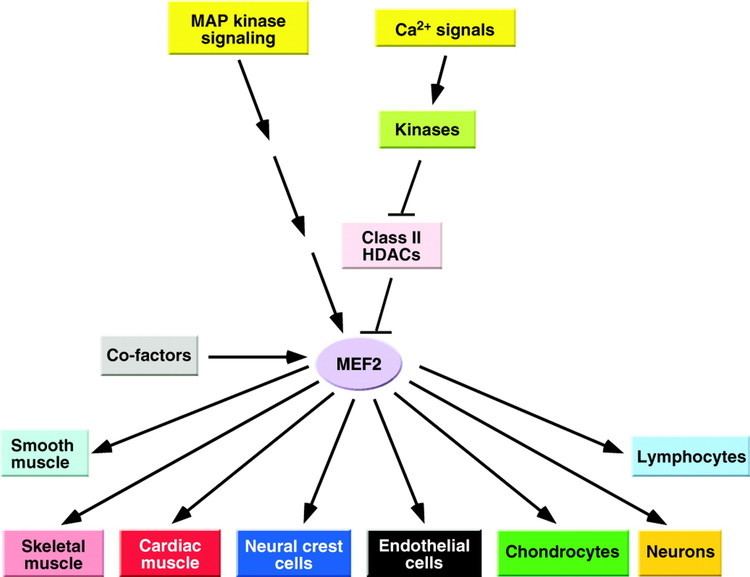 | ||
Gene music using protein sequence of mef2c myocyte enhancer factor 2c
In the field of molecular biology, myocyte enhancer factor-2 (Mef2) proteins are a family of transcription factors which through control of gene expression are important regulators of cellular differentiation and consequently play a critical role in embryonic development. In adult organisms, Mef2 proteins mediate the stress response in some tissues. Mef2 proteins contain both MADS-box and Mef2 DNA-binding domains.
Contents
- Gene music using protein sequence of mef2c myocyte enhancer factor 2c
- Gene music quartet using protein sequence of mef2c myocyte enhancer factor 2c
- Discovery
- Species distribution
- Sequence and structure
- Development
- Stress response
- References
Gene music quartet using protein sequence of mef2c myocyte enhancer factor 2c
Discovery
Mef2 was originally identified as a transcription factor complex through promoter analysis of the muscle creatine kinase (mck) gene to identify nuclear factors interacting with the mck enhancer region during muscle differentiation.
Species distribution
The Mef2 gene is widely expressed in all branches of eukaryotes from yeast to humans. While drosophila has a single Mef2 gene, vertebrates have four versions of the Mef2 gene (human versions are denoted as MEF2A, MEF2B, MEF2C, and MEF2D), all expressed in distinct but overlapping patterns during embryogenesis through adulthood.
Sequence and structure
All of the mammalian Mef2 genes share approximately 50% overall amino acid identity and about 95% similarity throughout the highly conserved N-terminal MADS-box and Mef2 domains, however their sequences diverge in their C-terminal transactivation domain (see figure to the right).
The MADS-box serves as the minimal DNA-binding domain, however an adjacent 29-amino acid extension called the Mef2 domain is required for high affinity DNA-binding and dimerization. Through an interaction with the MADS-box, Mef2 transcription factors have the ability to homo- and heterodimerize, and a classic nuclear localization sequence (NLS) in the C-terminus of Mef2A, -C, and – D ensures nuclear localization of the protein. D-Mef2 and human MEF2B lack this conserved NLS but are still found in the nucleus.
Development
In drosophila, Mef2 regulates muscle development. Vertebrate skeletal muscle differentiation in conjunction with bHLH transcription factors is also regulated by Mef2.
Loss of Mef2c in neural crest cells results in craniofacial defects in the developing embryo and neonatal death caused by blocking of the upper airway passages. Mef2c upregulates the expression of the homeodomain transcription factors DLX5 and DLX6, two transcription factors that are necessary for craniofacial development.
Stress response
In adult tissues, Mef2 proteins regulate the stress-response during cardiac hypertrophy and tissue remodeling in cardiac and skeletal muscle.
